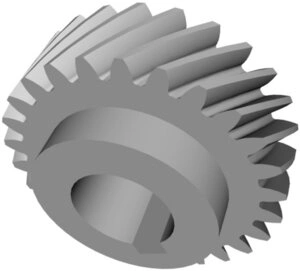Helical gears are widely used in machinery due to their ability to transmit power smoothly and quietly. Fabricating helical gears on a milling machine is a precise process that involves several steps to ensure the gear’s accuracy and performance.
The process begins with selecting the appropriate gear blank material and ensuring it is properly prepared. The dimensions of the blank, including its diameter and thickness, are calculated based on the gear’s design specifications. The helix angle, module, number of teeth, and pressure angle are crucial parameters that must be determined before starting. .
A universal milling machine equipped with a dividing head and a helical milling attachment is used for cutting the gear. The dividing head is set at an angle corresponding to the gear’s helix angle, allowing the gear teeth to be cut at the desired inclination. The gear cutter, selected based on the module and profile, is mounted on the milling arbor. The milling machine is set to rotate the dividing head in synchronization with the table feed, ensuring the accurate cutting of helical teeth. .
Finally, the gear undergoes finishing processes like deburring and heat treatment to improve its durability and precision. This method ensures high-quality helical gears suitable for various industrial applications.
Helical Gear Cutting Calculation
Diameter
Teeth
Helix Angle
- Submit
- Clear
- Back
- Go to Demo

Lead of Gear MM:
Module:
Normal Module:
Pitch Diameter MM:
Whole Depth MM:
Addendum MM:
Dedendum MM:
Tooth Thickness MM: